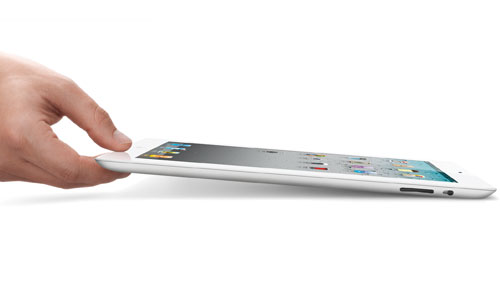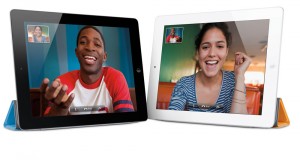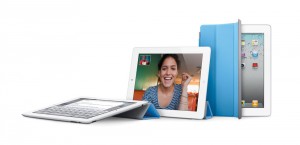
Apple CEO Steve Jobs took centre stage at Apple’s highly anticipated iPad 2 launch in San Francisco on Wednesday, hailing the arrival of the post-personal computer world.
The audience, made up mainly of journalists, gave him a standing ovation as he walked onto the stage, with many noting how well he was looking. Jobs is on medical leave for an unspecified health condition.
But it was not Jobs that journalists had gathered to see. Rather, it was the launch of the iPad 2, the successor to Apple’s wildly popular tablet computer. Unlike a year ago, when the company launched the original iPad, the market has become significantly more competitive, with Google Android-based tablets such as Motorola’s Xoom and BlackBerry’s PlayBook taking centre stage at recent trade shows.

Apple has generated US$9,5bn in revenue from sales of the first-generation iPad. It’s sold more than 15m of the devices, sending Apple’s share price into the stratosphere. Last year, the company shot past Microsoft to become the world’s most valuable technology. Today, Apple is worth $100bn more than the Windows software maker, which is yet to respond to Apple’s success in the fast-growing market for tablet computers.
The iPad 2 will be available in the US on 11 March and soon thereafter in 23 other countries, including Sweden, the UK, Germany and the Czech Republic. SA will not receive the device at launch, with local distributor Core Group saying it’s not sure when it will arrive on SA shores.
But let’s get the nitty-gritty of Apple’s new iPad. First up is a new 1GHz, A5 dual-core processor, promising a much snappier user experience. Jobs claims the new version will provide “up to nine time the graphics performance with the same low power as the original processor”.
As expected, the iPad 2 has front- and rear-facing cameras. It also has a gyroscope, a feature first introduced in Apple products in the iPhone and iPod Touch. There’s now an HDMI accessory, allowing users to hook up the device to flat-panel television sets and modern computer monitors.

Unlike the original iPad, the new generation product will come in two colours — black and white.
The physical design has also changed, with the company slimming down the device by a third. The iPad 2 is thinner than the iPhone 4.
Battery life remains the same: Apple reckons users will get 10 hours.
The company used the occasion to introduce the latest version of its iOS operating system. iOS 4.3 includes improved Web browsing performance in Safari thanks to a new JavaScript engine.
The software also has a new iTunes “home sharing” feature that lets users play content from desktop iTunes software over Wi-Fi.
The new software, out next week, is available for all iPads, the iPhone 4 and 3Gs and the iPod Touch. Photo Booth and FaceTime video calling will be available with the software as a free download.
Jobs also took the wraps off iMovie and Garage Band for the iPad, both available for download on the App Store for $4,99.
“This is worth repeating. It’s in Apple’s DNA that technology is not enough. It’s tech married with the liberal arts and the humanities. Nowhere is that more true than in the post-PC products,” Jobs said in a clear dig at Microsoft.
“Our competitors are looking at this like it’s the next PC market. That is not the right approach to this. These are post-PC devices that need to be easier to use than a PC, more intuitive. The hardware and software need to intertwine more than they do on a PC. We think we’re on the right path with this.” — Candice Jones, TechCentral
- Subscribe to our free daily newsletter
- Follow us on Twitter or on Facebook




